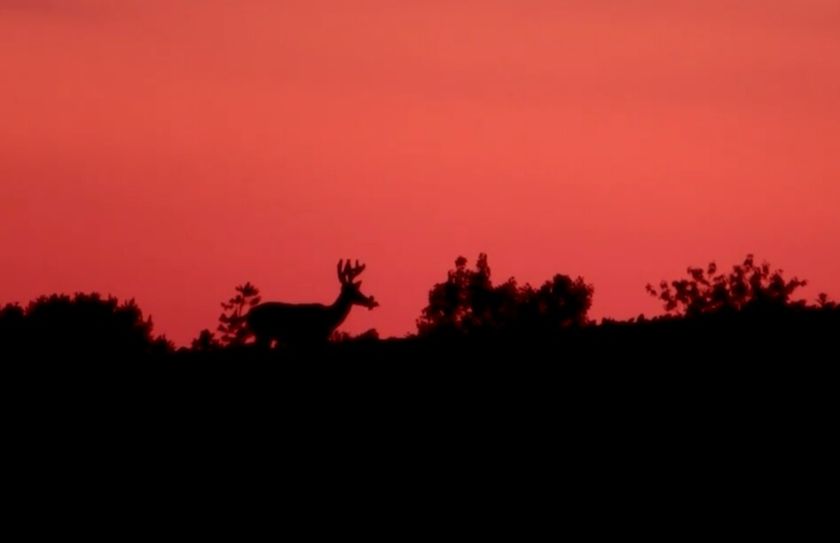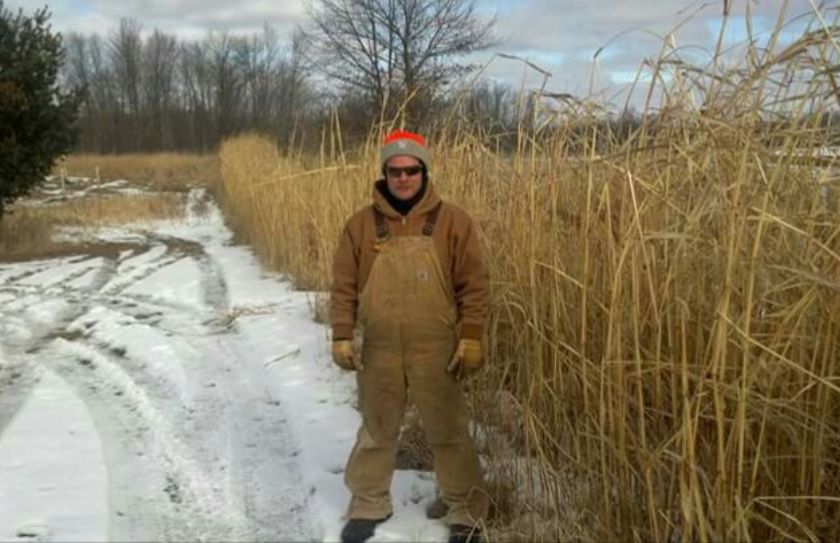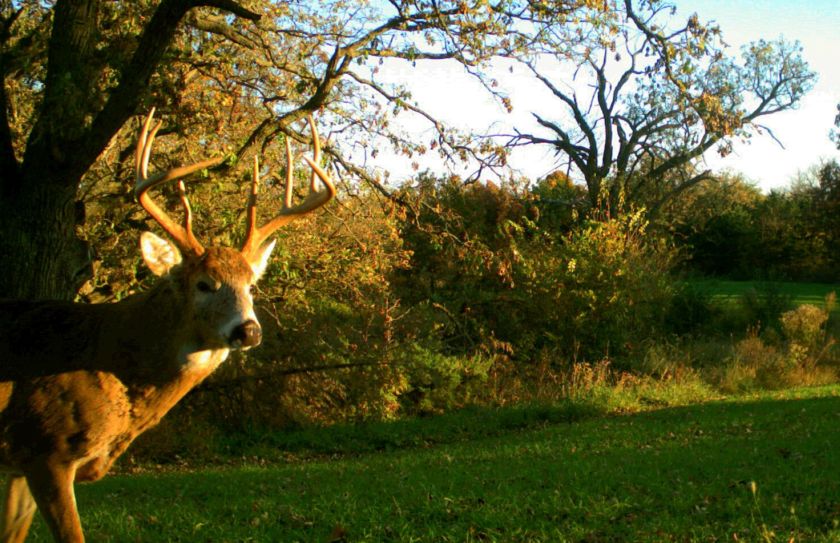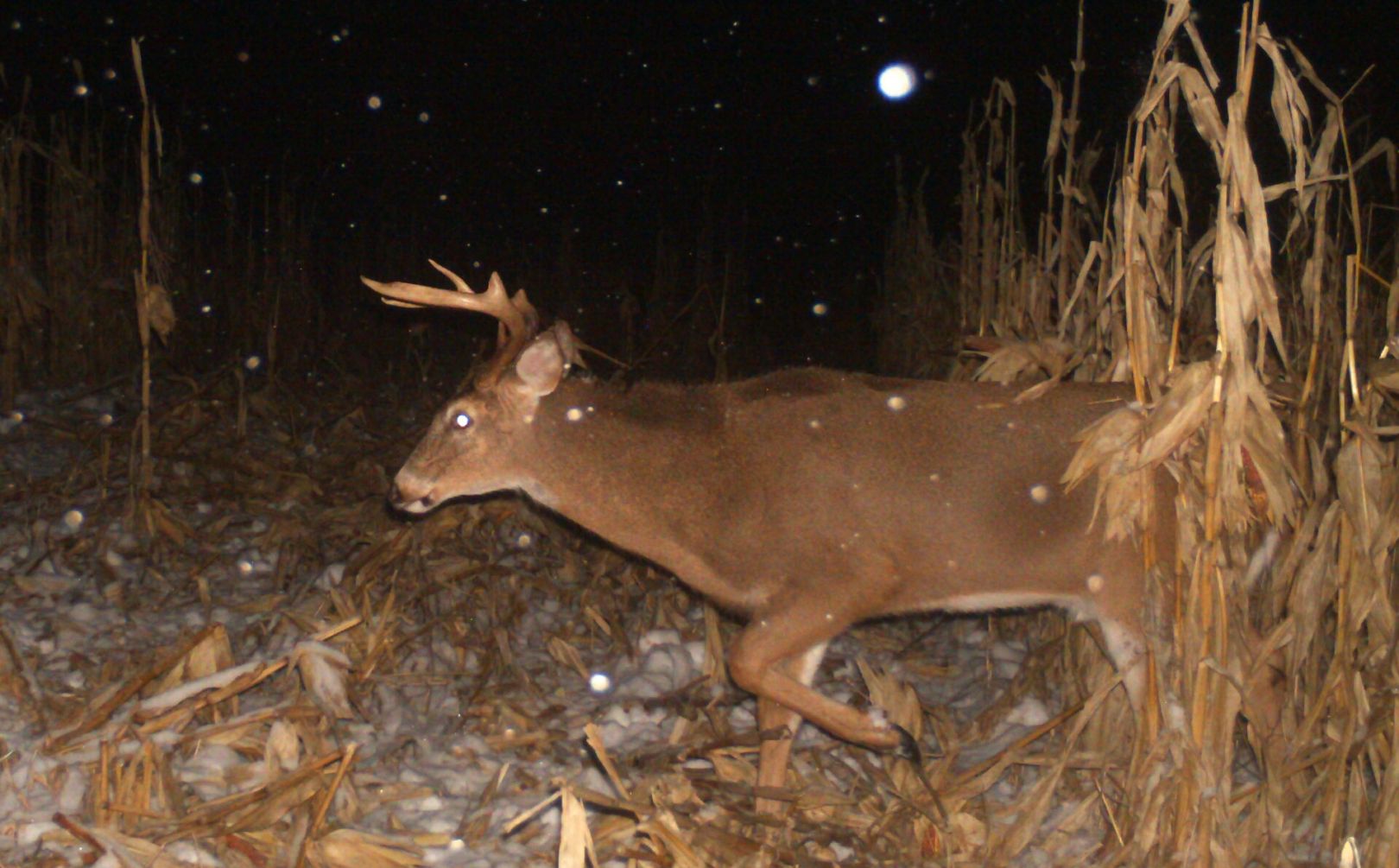
Which Direction Do Your Food Plots Point? Food plots are much more than simply just a place to attract, hold and feed deer. The greatest influence that you can use your food plots for, is for pointing deer in the direction that you need them to travel, on your land. Sure, that your plots need to be adequately attractive, and offer a level of appreciable substance for the most critical portions of the hunting season, is already a given; but where do your food plots ultimately point deer to travel? There are 2 basic varieties of food plots that you can use, to either point deer or stop deer, however, first and foremost, it is critical that your plots are not pointing the deer on your land, to danger.
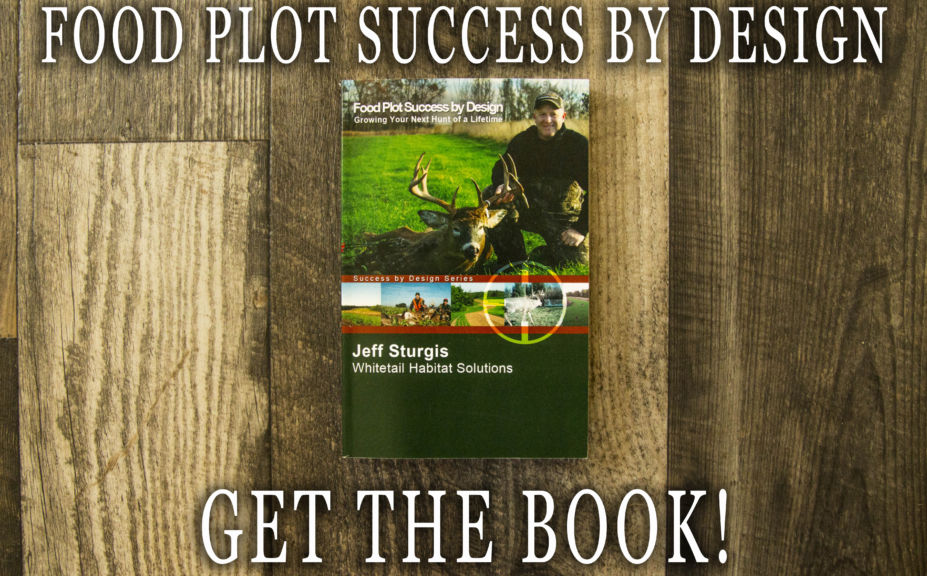
If you enjoy advanced whitetail strategies, you'll love my Whitetails by design book series, Which includes, Food Plot Success By Design!
What Are Dangerous Food Plot Directions To Avoid?
The best question that you can ask yourself, is "Where do the deer go next?". If your answer is that your food plot is just a quick stop on the way to a much larger planting on your own land, than you may have the makings for a great hunting/harvest/kill plot. However, if your food plot is the last stop on the way to your neighbors, there are a few concerns that you need to address:
1. Border Food Plots Can be Extremely Dangerous
-Regardless of the type of cover you have on your land, does your neighbor have adequate bedding cover too? Because if they do, than you can expect a portion of the deer herd to bed on their land, and not your own. I have visited dozens of parcels where one or more of the surrounding neighbors had food plots located right on their borders. On nearly all food plots, tree stands can visibly be seen, and most neighboring border plots are no exception. That is an outstanding opportunity for my clients, because with a little bedding habitat work, they can successfully hold the majority of the deer that ultimately feed on that neighboring plot, on their own land. Also, by offering high quality and lower hunting pressure food plots, on their own land, the deer could be easily trained to bed in those exterior locations adjacent to the neighbor's food plot, while turning their afternoon attention towards the interior of my client's land.
*High level food plot management has more to do with location strategy, than it does creating a pretty food plot? Make sure to check out my recently completely trilogy of whitetail strategy books, including, "Food Plot Success by Design", which details how to make sure that you are getting the highest level of strategy, for your food plot efforts.
The best advice I can give you when it comes to the location of your food plots, is that if your food plots point and encompass deer, within an en entire afternoon of movement, including from Bedding to Afternoon Feeding to Darkness, then your food plot strategy is very good. However if your food plots are only a portion of that movement, for example merely a stopping point on the way to feed on your neighbors before dark, or a mid point of the movement after capturing deer that were bedded on your neighbor's land during the day, then it is quite possible they need to be moved.
2. Is the amount that you planted, enough to sufficiently hold deer until darkness, after they exit bedding areas on your land, head to the plot, feed and then continue on from there after dark.
-If your food plots are a stopping point until darkness settles in, then they need to have enough forage to do so, and they need to last the entire hunting season. If a hole is created at some point during the hunting season due to lack of food within that food plot stopping point, then you can expect deer to take their dependable afternoon movement patterns, including their daytime bedding activities, and move elsewhere. If you place yourself in the mind of a deer herd, they want to bed securely during the day in a relative short distance from their afternoon food source, they want to travel to that afternoon food source in peace, and they want to feed on that food source often until darkness settles in. Where they travel from there is not really a cause for concern, or planning, but to control that afternoon movement is critical.
3. Long, Thin Food Plots Are Great!
-It is pretty easy to see where your food plots point deer, when they are continuous, long, thin and carry the same forage diversity from end to end. If you have one variety at one end, and one at the other, you can't expect deer to continue on or move where your food plot points, because there will be a hole of attraction. If you have a highly diverse, long thin food plot you can expect deer to not only enjoy it, but often relate to it from "end to end", in particular cruising bucks. However the worst thing that you can do is to point it at your neighbor's land, because you will create a highway for deer travel, on and off, your land. The stronger your food plot is, the greater the risk.
Long thin food plots pointing at least somewhat parallel to your own parcel borders, can be outstanding additions to your land. They cause deer to travel, feed, stop and do it all over again, effectively slowing down the deer herd and keeping them on your own land. A long, thin food plot can also be a great feature on your land, if deer are being pulled out of interior cover, and then sent to your border, that is adjacent to a large agricultural field. A long thin plot can create a "T" of deer movement, so that as deer approach your border, they are encouraged to turn right or left and follow the food, instead of crossing the fence.
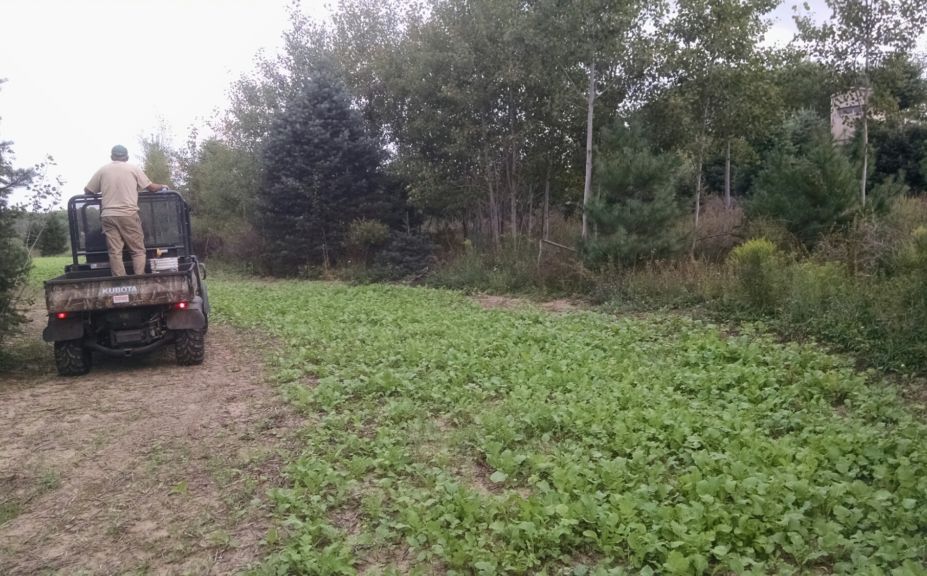
*Food plots that are long and thin, need to have consistent diversity and volume from end to end, otherwise, why would deer relate to the entire length? This is why you never want to break single, small plots that run in a long line, into seperate food plot varieties. Broken planting varieties actually decrease and stop movement, instead of enhance movement. For one of my favorite traveling food plot blends, check out "Fall Food Plot Rotation Strategies".
Food Plot Circles, Squares and Blobs:
Large food plots "blobs" are stopping points, so you have to ask yourself, "Is this where I want the deer to stop, on my land?". A blob offers no direction of travel, so it should effectively be a stopping point. I encourage you to avoid using stopping point food plots directly adjacent to major bedding areas, because you will lack the ability to hunt the afternoon movement without spooking deer.
Many parcels that I visit, have at least a portion of the land that is being converted from agricultural rotation, to wildlife habitat. A common feature includes a large block of timber, adjacent to a large block of ag. What work's best is to pull a blob of a food source out, and away from the bedding edges of the cover, so that you force deer to travel a greater distance from their daytime bedding areas, on your own land. By using long thin lines of heavy, quality cover, or by creating thin food plots that point towards exterior stand locations, then you can increase the amount time deer on your land, as well as drastically improve the number of stand locations you can effectively hunt. Small, kill plots can be a great idea for a quick stop and ambush point, but they should include a diversity that will last the entire season. Also, multiple kill plots that are aligned for deer to travel through, on the way to a large food plot stopping point, should EACH feature the same combination of forage plantings. If any plot features a hole of attraction and volume, then the entire movement can be be eliminated from a deer herd's afternoon daily movement pattern.
Where Do Your Kill Plots Point?
A kill plot should not only offer a quick stopping point, but it should match the flow of the habitat and terrain, to naturally point deer in the direction of a major food source on your own land. The actual shape of your food plot, really doesn't matter, as long as it creates a continuous and natural flow that deer would have already traveled in the first place. Terrain changes, habitat changes, age of habitat and waterways are all natural deer movements, that should be followed when considering where to create a kill plot. I personally like long, thin lines of food that mimic and follow the existing natural flow of the habitat.
Following the natural flow of the habitat, is how deer move through their habitat in the first place, so kill plots that do the same offer distinct hunting advantages as well! By approaching kill plot stand locations from a perpendicular direction, you limit the amount of time you are exposed to the deer movment. Also, but approaching through low quality habitat, right to the edge of high quality habitat, greatly reduces the change that you will spook deer not only when you access the stand, but while you are on your stand and allowing your scent to blow back into the non-deer area.
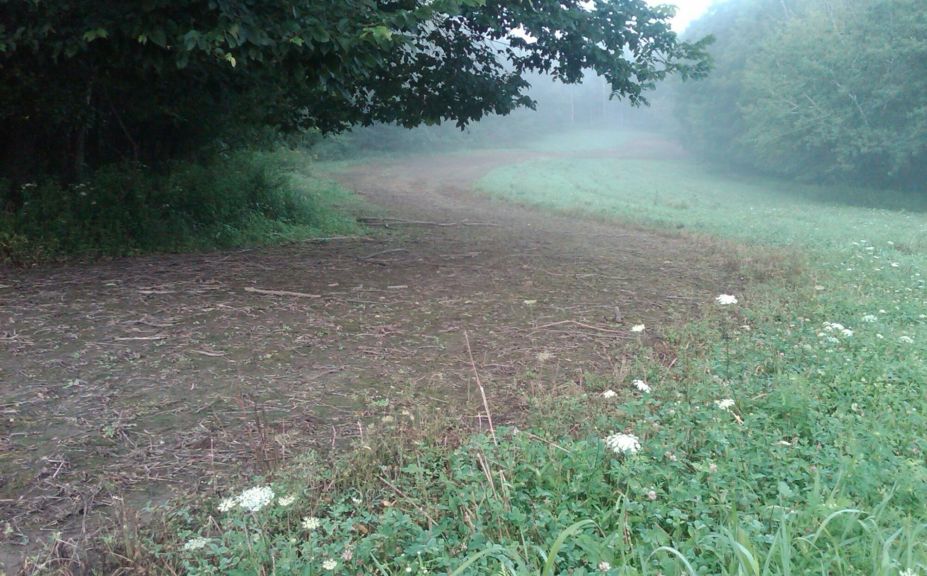
*Where do your kill plots point? A kill plot should be less about the shape of the plot, and more about how that particular food plot flows with natural habitat. This particular plot creates several different stand locations, while eventually dumping deer into a major, large destination food plot that serves to stop and hold deer until darkness. It also allows hunters to get in and out of stand locations without spooking the deer either on the kill plot, or in the large plot that holds deer until dark. For more food plot hunting strategies, make sure to read "10 Reasons To Never Hunt a Food Plot".
Kill plots can offer great opportunities for mature bucks, but they have to be strategically placed, and strategically hunted. Here is a great video on creating and hunting a kill plot.
Where Your Food Plots Point is Critical:
Attracting, holding, feeding and growing a quality deer herd are all noble goals when it comes to a great food plot strategy. However, where your food plots are ultimately moving and pointing the local deer herd, will make or break your goals for not only creating a quality deer herd, but for successfuly hunting a quality deer herd as well.
